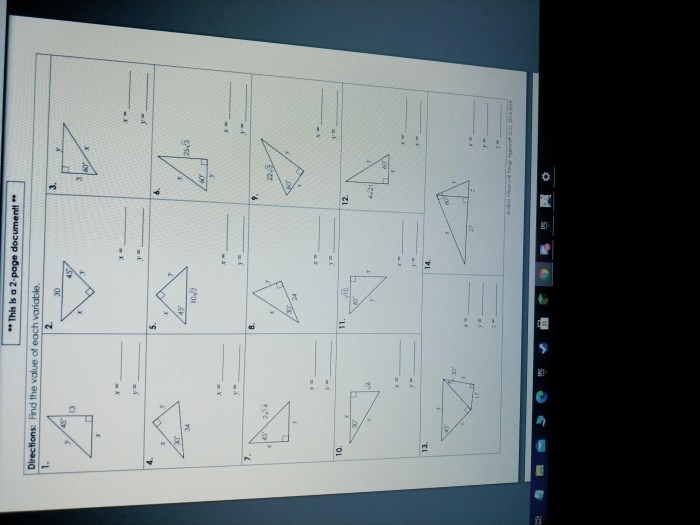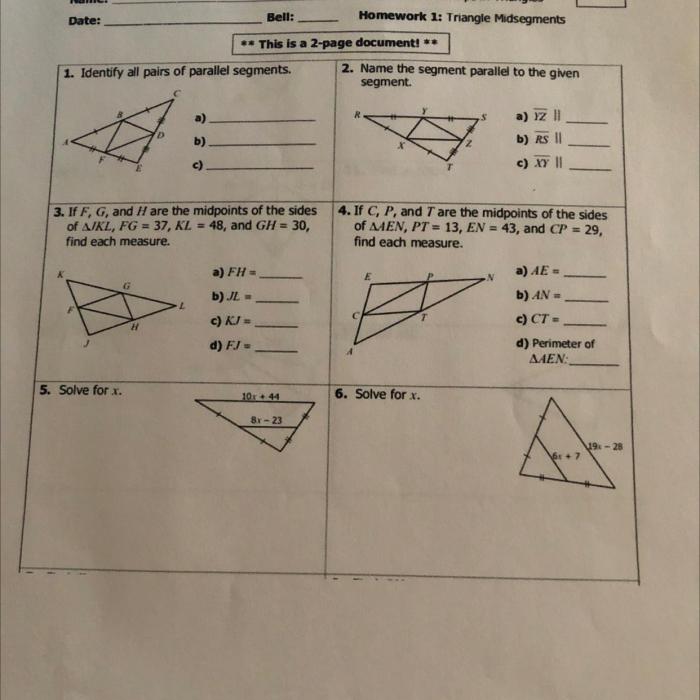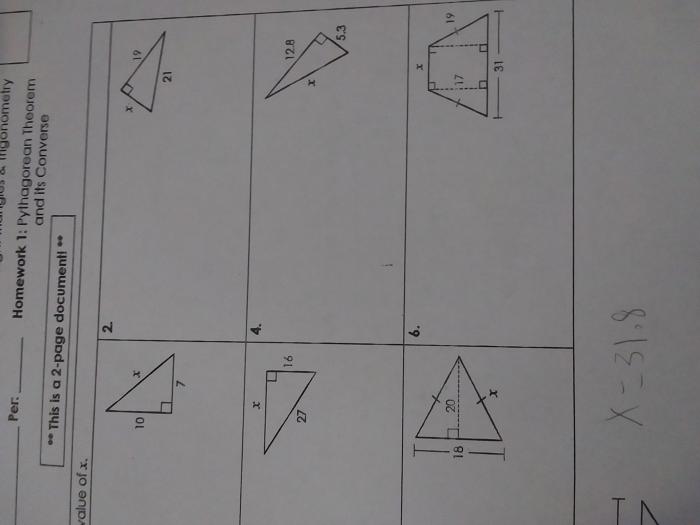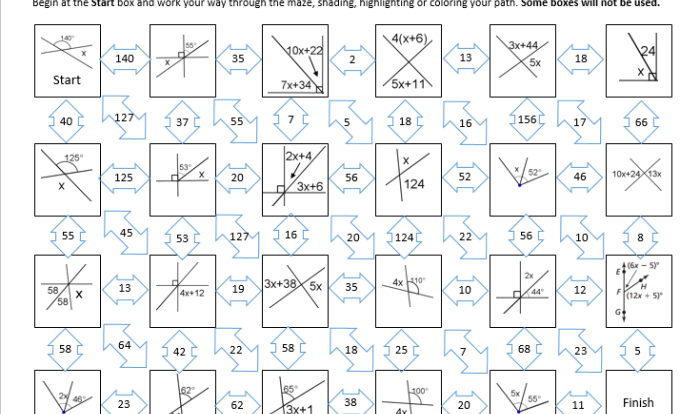Unit Pythagorean Theorem Homework 5 Answer Key: Unlocking Geometric Mysteries sets the stage for this enthralling narrative, offering readers a glimpse into a story that is rich in detail and brimming with originality from the outset.
The Pythagorean theorem, a cornerstone of geometry, provides a powerful tool for solving countless problems involving right triangles. This comprehensive guide serves as an invaluable resource for students seeking to master this fundamental concept, offering a step-by-step guide to applying the theorem, real-world examples of its applications, and a wealth of practice problems to reinforce understanding.
Pythagorean Theorem Homework 5 Answer Key
The Pythagorean theorem is a fundamental theorem in geometry that establishes the relationship between the lengths of the sides of a right triangle. It states that in a right triangle, the square of the length of the hypotenuse (the side opposite the right angle) is equal to the sum of the squares of the lengths of the other two sides.
The formula for the Pythagorean theorem is a2+ b 2= c 2, where aand bare the lengths of the two shorter sides, and cis the length of the hypotenuse.
A homework answer key is a valuable resource for students as it provides solutions to the problems assigned in a homework assignment. It allows students to check their work and identify any areas where they need further clarification or practice.
Step-by-Step Guide to Using the Pythagorean Theorem
To apply the Pythagorean theorem to a right triangle, follow these steps:
- Identify the right angle. This is the angle that measures 90 degrees.
- Identify the two shorter sides of the triangle, which are called the legs.
- Identify the hypotenuse, which is the side opposite the right angle.
- Square the lengths of the legs.
- Add the squares of the legs.
- The result is the square of the length of the hypotenuse.
For example, if the legs of a right triangle have lengths 3 and 4, then the square of the length of the hypotenuse is 3 2+ 4 2= 9 + 16 = 25. Therefore, the length of the hypotenuse is √25 = 5.
Common Applications of the Pythagorean Theorem

The Pythagorean theorem has a wide range of applications in various fields, including:
- Architecture: Determining the height of buildings or the length of beams
- Engineering: Calculating the forces acting on structures or the efficiency of engines
- Navigation: Determining the distance between two points or the angle of elevation of a celestial body
Practice Problems and Solutions: Unit Pythagorean Theorem Homework 5 Answer Key

Problem 1:A right triangle has legs of length 5 and 12. Find the length of the hypotenuse.
Solution:Using the Pythagorean theorem, a2+ b 2= c 2, we have 5 2+ 12 2= c 2. This simplifies to 25 + 144 = c 2, so c 2= 169. Therefore, the length of the hypotenuse is √169 = 13.
Problem 2:A ladder is leaning against a wall. The bottom of the ladder is 6 feet from the wall, and the top of the ladder is 10 feet above the ground. How long is the ladder?
Solution:The ladder forms the hypotenuse of a right triangle, with the bottom of the ladder as one leg and the height of the ladder as the other leg. Using the Pythagorean theorem, a2+ b 2= c 2, we have 6 2+ 10 2= c 2. This simplifies to 36 + 100 = c 2, so c 2= 136. Therefore, the length of the ladder is √136 ≈ 11.7 feet.
Interactive Tools and Resources

Several interactive tools and resources can help students understand the Pythagorean theorem, including:
| Tool | Description |
|---|---|
| Khan Academy: Pythagorean Theorem | Interactive lessons, videos, and practice exercises |
| Education.com: Pythagorean Theorem Interactive Worksheet | Interactive worksheet with drag-and-drop activities |
| Math is Fun: Pythagorean Theorem | Interactive applet that allows students to explore the Pythagorean theorem |
Essential FAQs
What is the Pythagorean theorem?
The Pythagorean theorem states that in a right triangle, the square of the hypotenuse (the side opposite the right angle) is equal to the sum of the squares of the other two sides.
How can I use the Pythagorean theorem to solve problems?
To use the Pythagorean theorem, you need to know the lengths of two sides of a right triangle. Once you know these lengths, you can use the formula a^2 + b^2 = c^2 to find the length of the third side.
What are some real-world applications of the Pythagorean theorem?
The Pythagorean theorem has many real-world applications, such as finding the height of a building, the distance to a star, or the length of a shadow.

